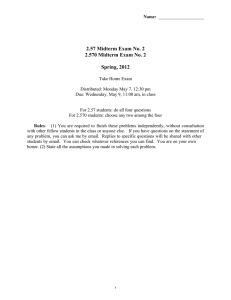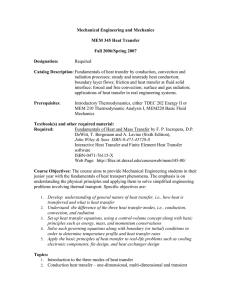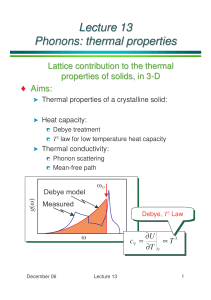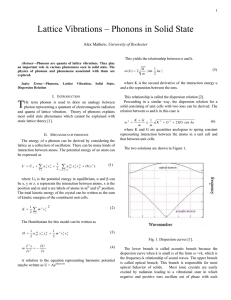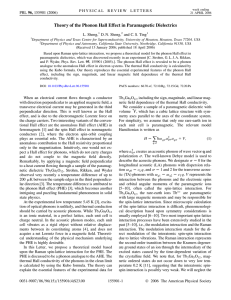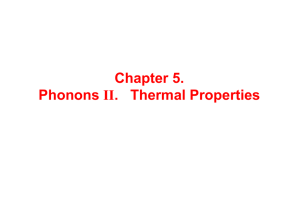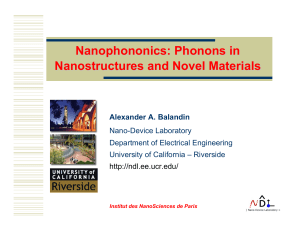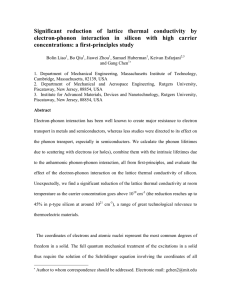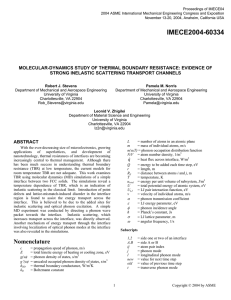Document 13445213
advertisement
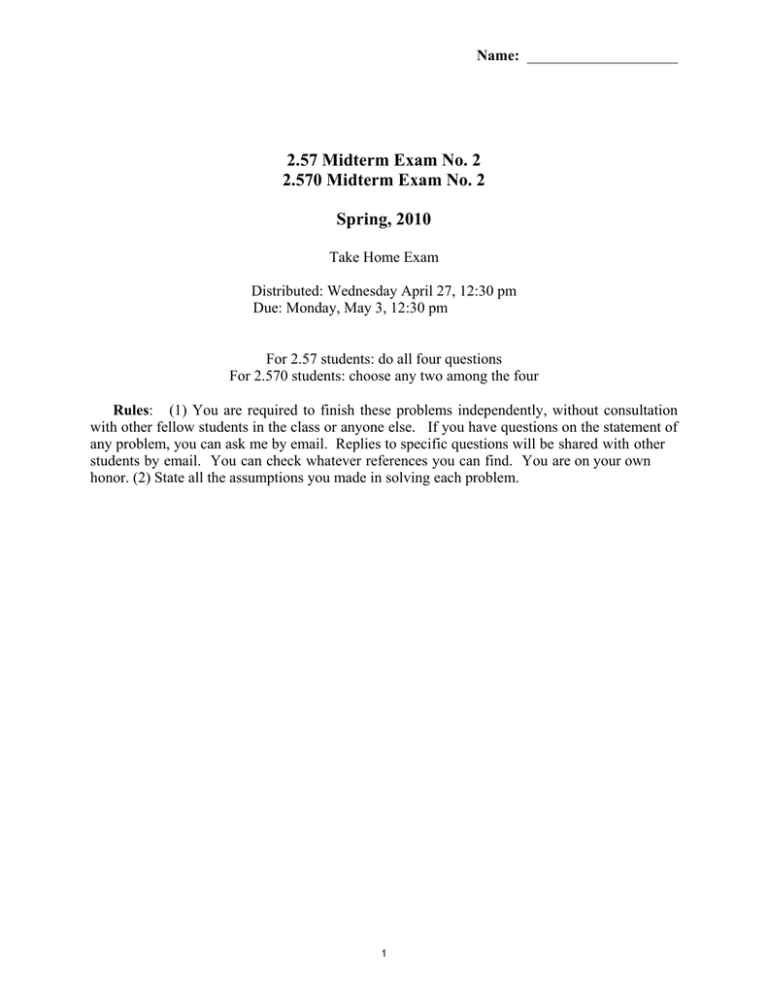
Name: ____________________ 2.57 Midterm Exam No. 2 2.570 Midterm Exam No. 2 Spring, 2010 Take Home Exam Distributed: Wednesday April 27, 12:30 pm Due: Monday, May 3, 12:30 pm For 2.57 students: do all four questions For 2.570 students: choose any two among the four Rules: (1) You are required to finish these problems independently, without consultation with other fellow students in the class or anyone else. If you have questions on the statement of any problem, you can ask me by email. Replies to specific questions will be shared with other students by email. You can check whatever references you can find. You are on your own honor. (2) State all the assumptions you made in solving each problem. 1 Name: ____________________ 1. Consider phonon heat conduction along an isolated atomic sheet (such as a graphene sheet that is made of one atomic layer of carbon atoms) at temperature T. We assume that there are three acoustic phonon branches in the atomic sheet and their dispersions are identical, given by ω = vk = v k 2x + k 2y The effective lattice constant is a. We also assume that phonons in the sheet have a constant relaxation time τ. (1) Derive an expression for the specific heat of the sheet per unit area. Show that at low temperatures, the specific heat is proportional to T2. (2) Derive an expression for the corresponding Fourier law for heat conduction along the sheet plane. (3) Derive an expression for the phonon thermal conductivity along the sheet plane. 2 Name: ____________________ 2. Consider electron thermoelectric transport along an isolated atomic sheet (such as a graphene sheet that is made of one atomic layer of carbon atoms) at temperature T. We assume that the atomic sheet is a semiconductor. The conduction band dispersion is given by h 2 (k x2 + k y2 ) E = E c + 2m The atomic sheet is doped to n-type such that the electron density per unit area is n. We also assume that electrons in the sheet have a constant relaxation time τ, and that the doping is not heavy such that the chemical potential is below the conduction band edge and the Boltzmann statistics is valid, i.e., the factor one in the denominator of the Fermi-Dirac distribution is much smaller than the exponential factor and hence it is negligible. Answer the following questions: (1) Determine an expression for the chemical potential of electrons in terms of given variables. (2) Derive expressions the Seebeck coefficient and the Peltier coefficient and show that the Onsager relation is valid. (3) Derive expressions for the electrical conductivity and electronic contribution to the thermal conductivity. 3 Name: ____________________ 3. Consider phonon heat conduction along a thin dielectric film of thickness d. No phonons transmit into the surrounding media. One interface is totally diffuse. The other interface reflects a fraction, p, of the incoming phonons specularly and the rest phonons diffusely. Derive an expression for the effective phonon thermal conductivity along the film as a function of the film thickness, normalized to the phonon thermal conductivity in the bulk material from which the film is made. Assume that the material is a Debye crystal, with frequency-independent phonon mean free path Λ. 4 Name: ____________________ 4. Consider thermal radiation between two parallel plates separated by 1 μm vacuum as shown in the following figure. One side is at absolute zero temperature and the other side is at 300 K. As an approximation, we assume that the thermal radiation behavior can be represented by a monochromatic radiation with a wavelength at 10 micron (wavelength in vacuum) and that the refractive indices of both plates are real and equal 4. We further assume that the thermal radiation at 10 micron comes to the interface with equal probability for all angles. Under such approximations, determine the ratio of radiation energy transferred from side 1 (the high temperature side) to side 2 by tunneling (when incidence angle is larger than the critical angle) to that transferred when incidence angle is smaller than the critical angle. 1 μm 300 K K 00 K n=44 n= n=4 n=4 5 MIT OpenCourseWare http://ocw.mit.edu 2.57 / 2.570 Nano-to-Macro Transport Processes Spring 2012 For information about citing these materials or our Terms of Use, visit: http://ocw.mit.edu/terms.



